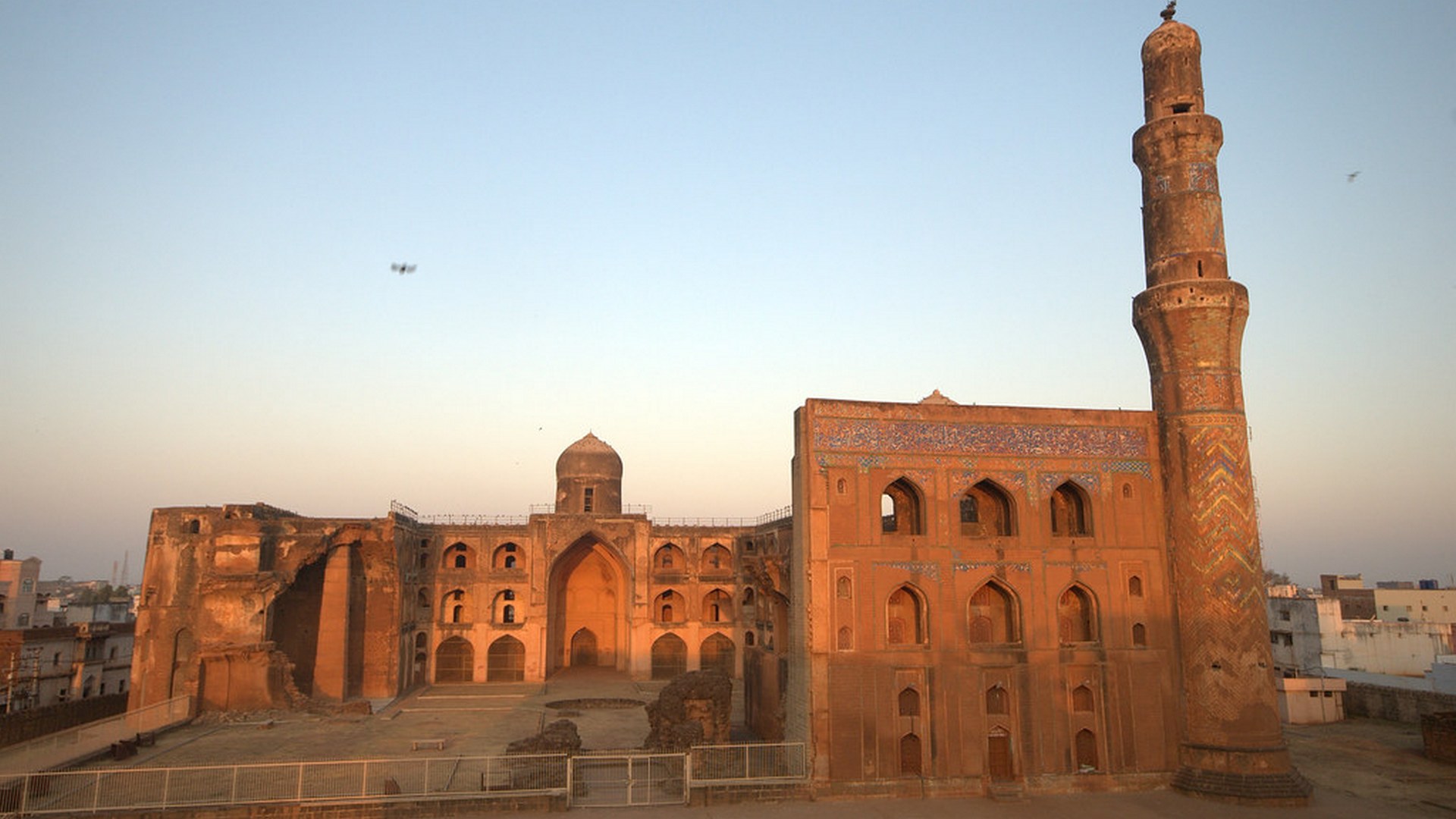Description
Property Name: Mahmud Gawan Madrasa
Inventory No: 91-8482-1
Date of infill of the inventory form: 2009-06-10
Country (State party): India
Province: Karnataka
Town: Bidar
Geographic coordinates: 17° 54′ 52.96″ N
77° 31′ 48.51″ E
Historic Period: 15th century, 2nd half
Year of Construction: 1472
Style: Bahmanid
Original Use: Madrasa
Current Use:
Architect: Unknown
Significance
The Persian influenced madrasa is established by Khodja Mahmud Gawan and had been an important educational center with a library consisting of over three thousand manuscripts. Although most of its decoration work does not exist today, the Persian style glazed tile work is recognizable. The structure was elevated on a base and had two decorated minarets. The madrasa has large reading halls with semi-octagonal chambers.
Selection Criteria
iv. to be an outstanding example of a type of building, architectural or technological ensemble or landscape which illustrates (a) significant stage(s) in human history
vi. to be directly or tangibly associated with events or living traditions, with ideas, or with beliefs, with artistic and literary works of outstanding universal significance
State of Preservation
During its usage as a military barrack in 1656, an explosion damaged the tower and the entrance. Recently monument in a bad situation and needs to be repaired and preserved.
References
Alfieri, Bianca Maria. 2000. Islamic Architecture of the Indian Subcontinent. London: Laurence King Publishing, 154, 155.
Burgess, James. 1972. Report on the Antiquities in the Bidar and Aurangabad Districts, in the territories of His Highness the Nizam of Haidarabad, being the result of the third season’s operations of the archeological survey of western India, 1875-76. Delhi: Indological Book House, 43.
Enc. Islaml2: “Bahmanis: Monuments, Bidar,” “Barid Shahis: Monuments,” “Bidar”
G. Yazdani: Bidar: Its History and Momuments (Oxford, 19471R Delhi, 1995)


